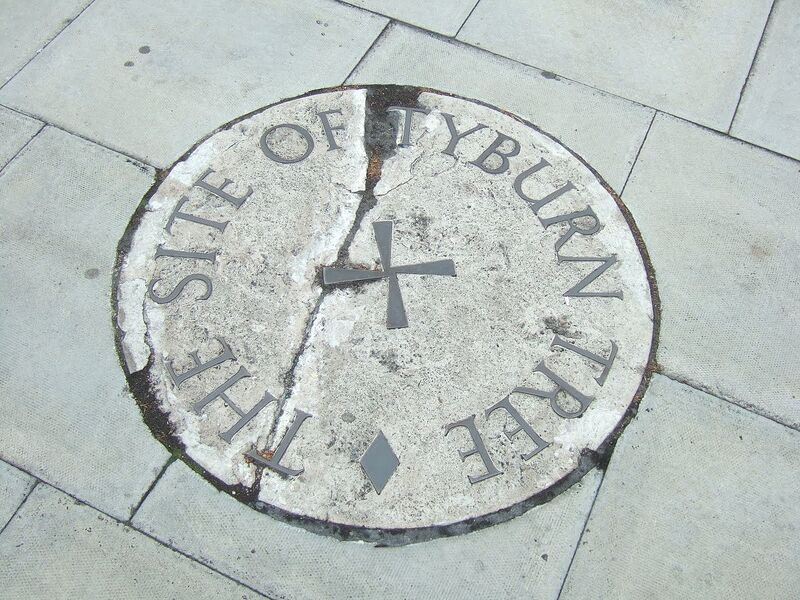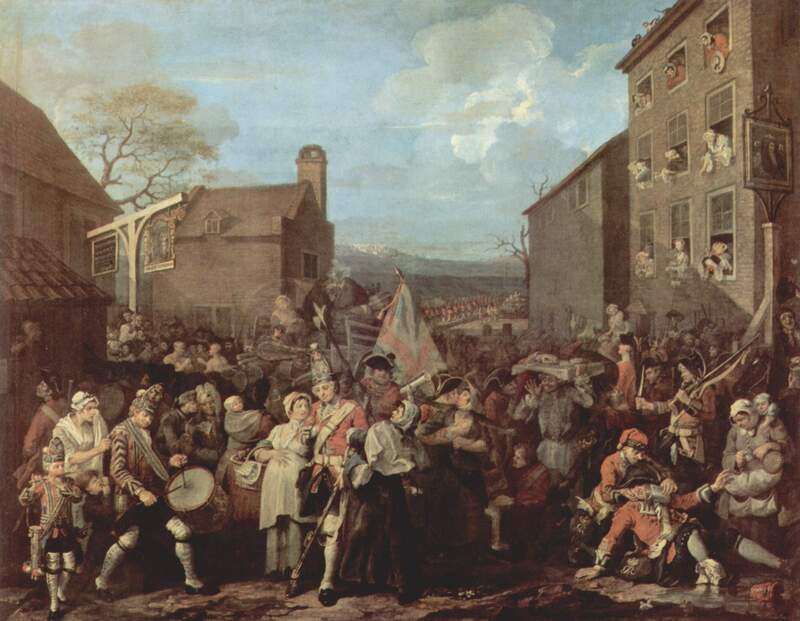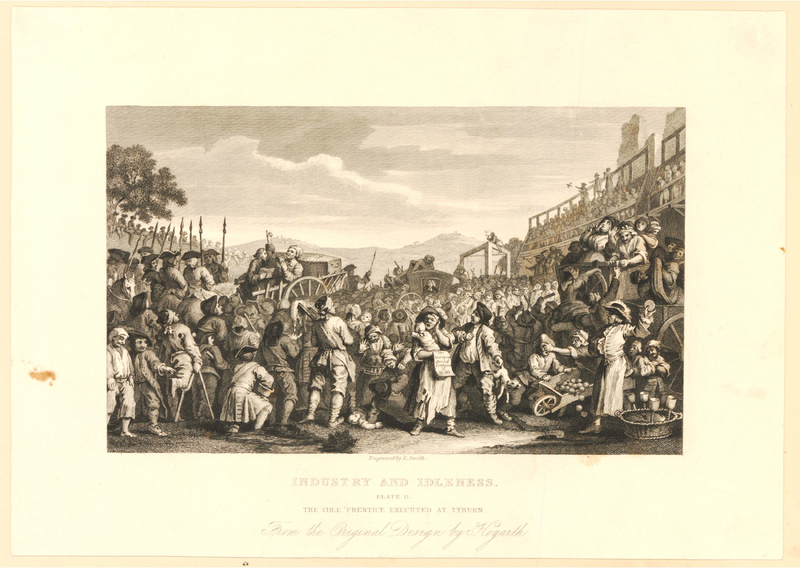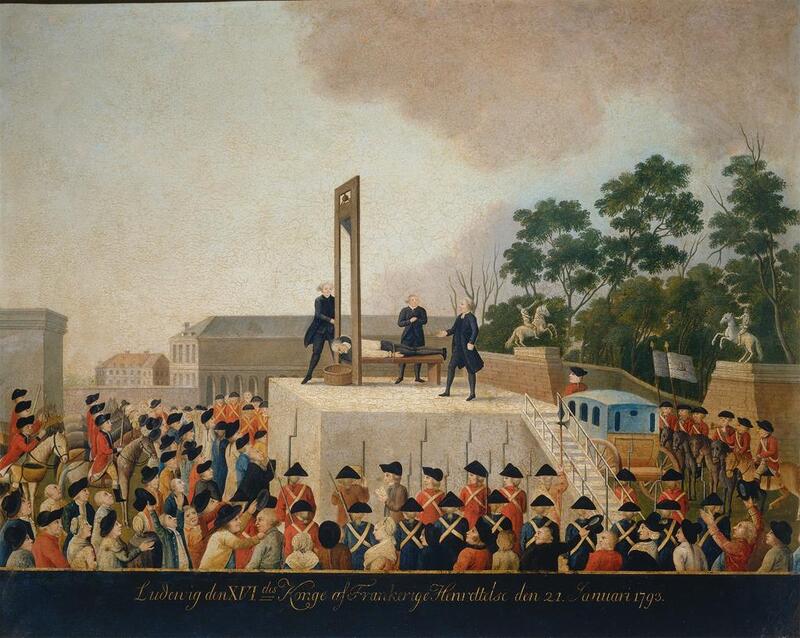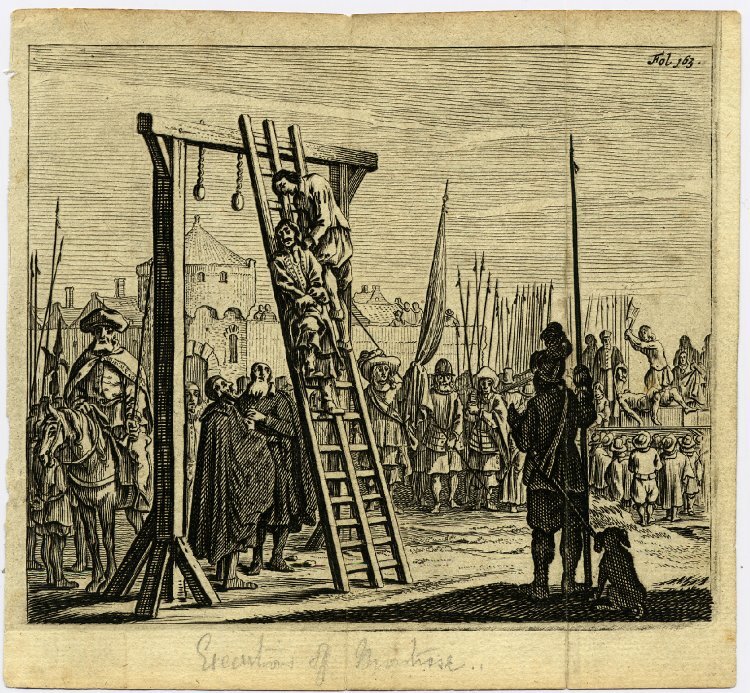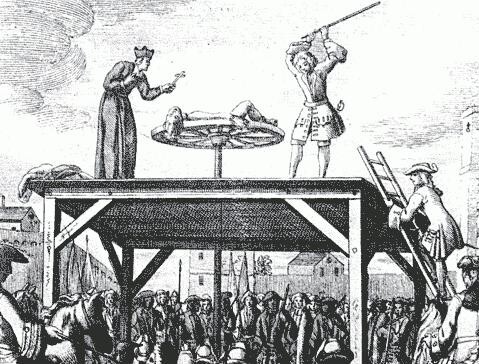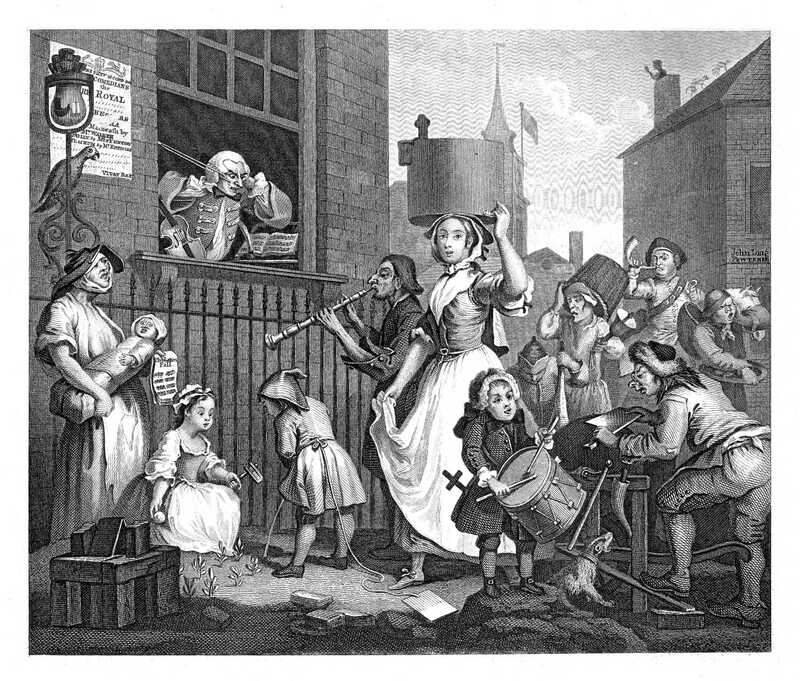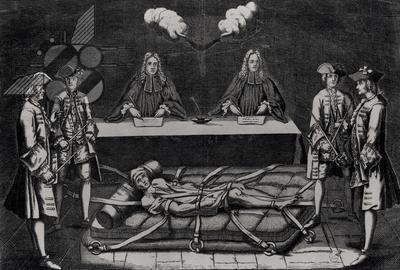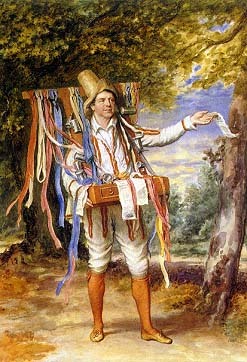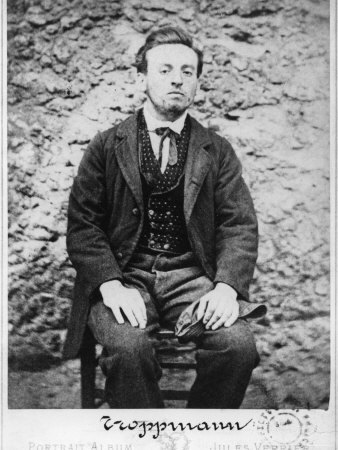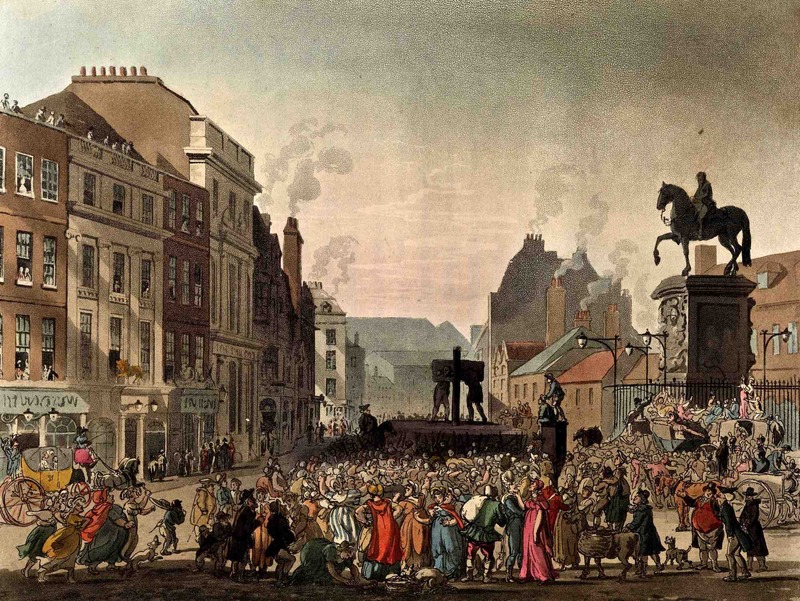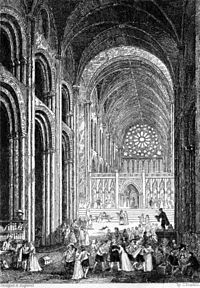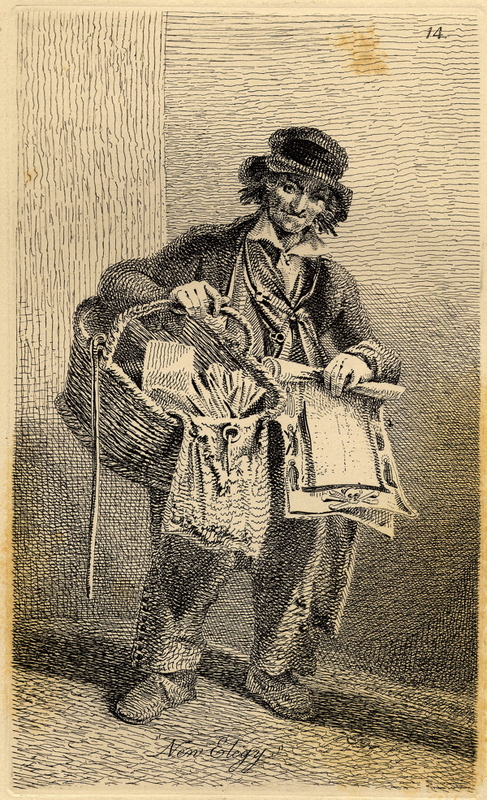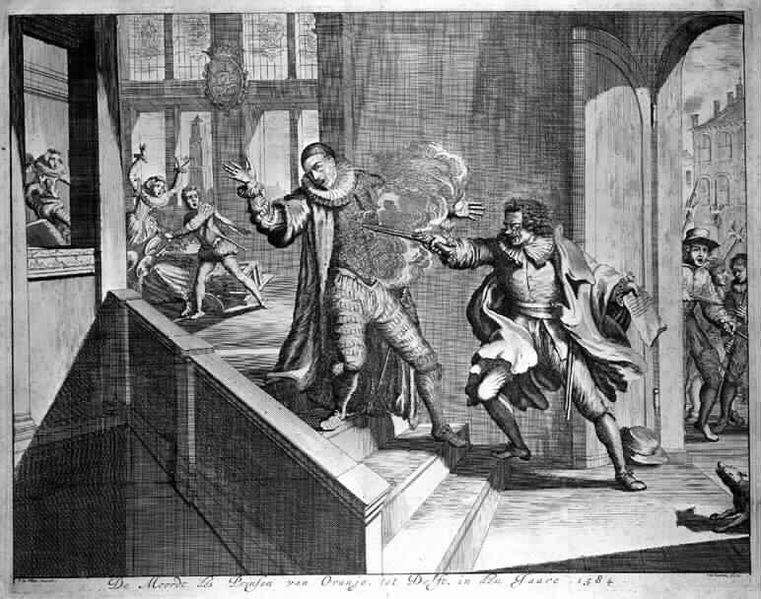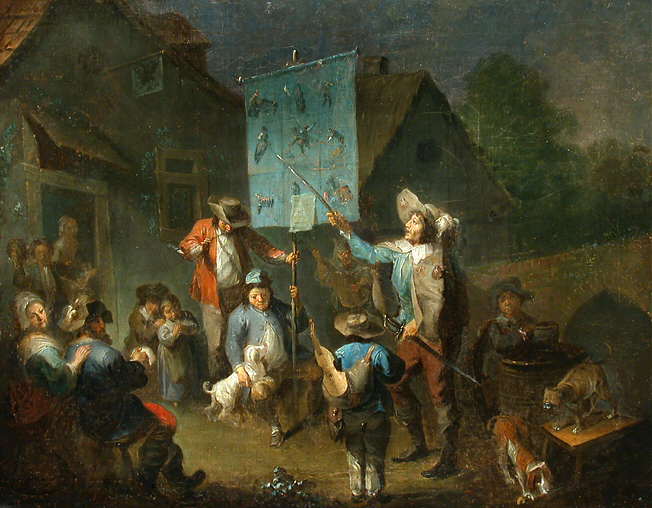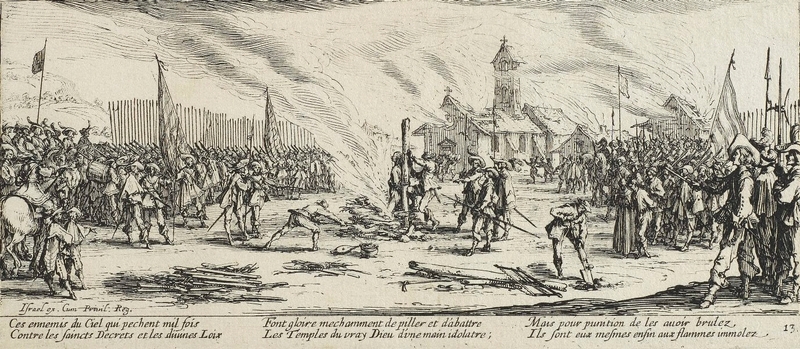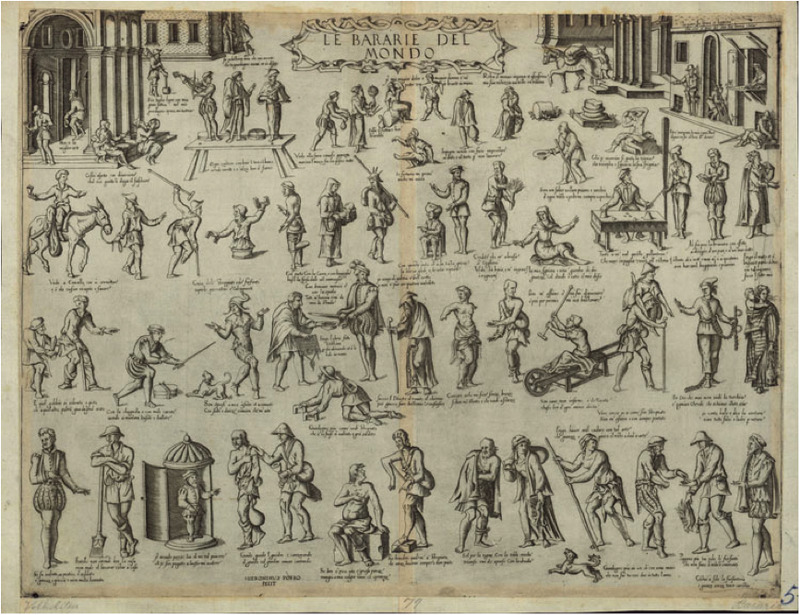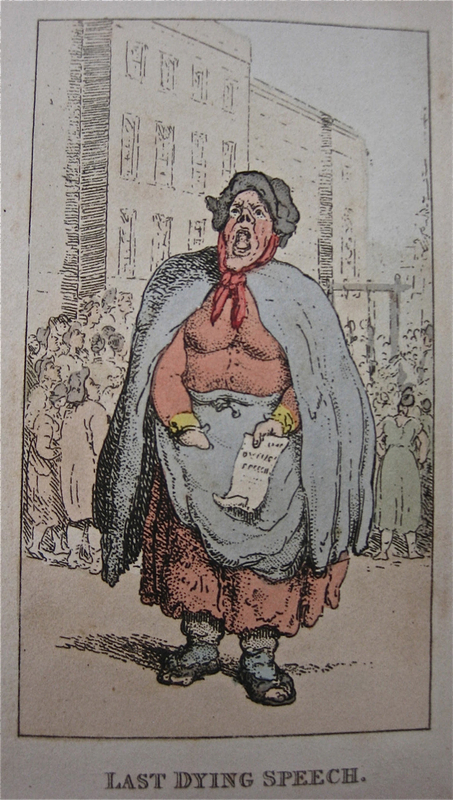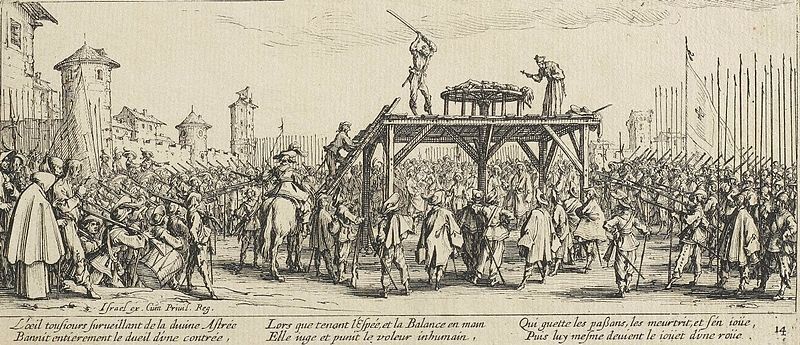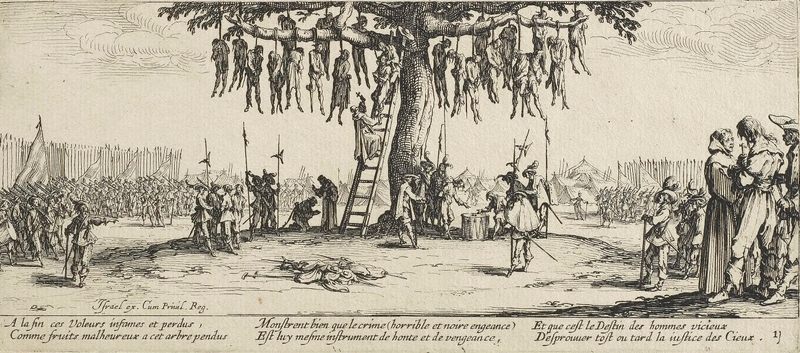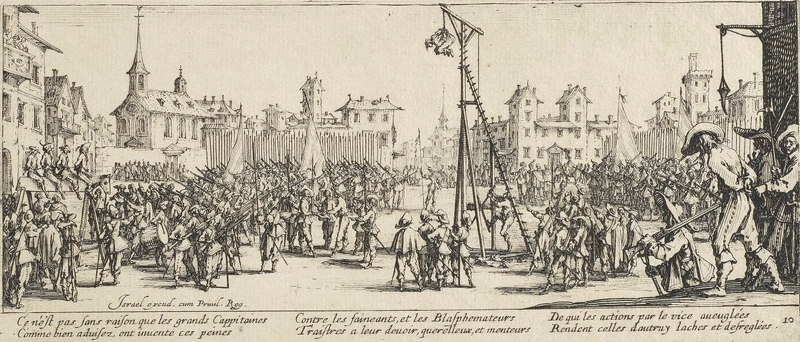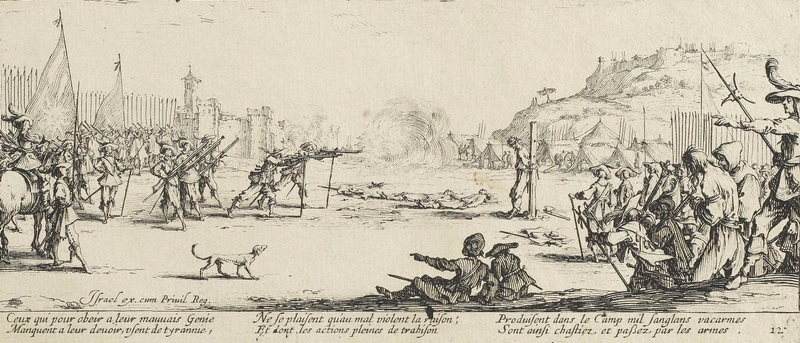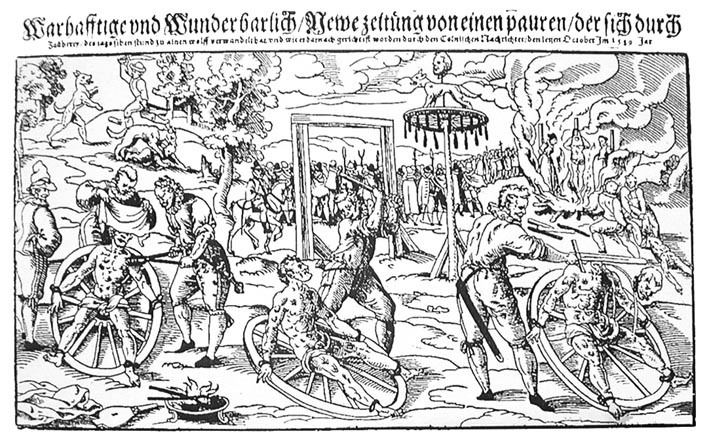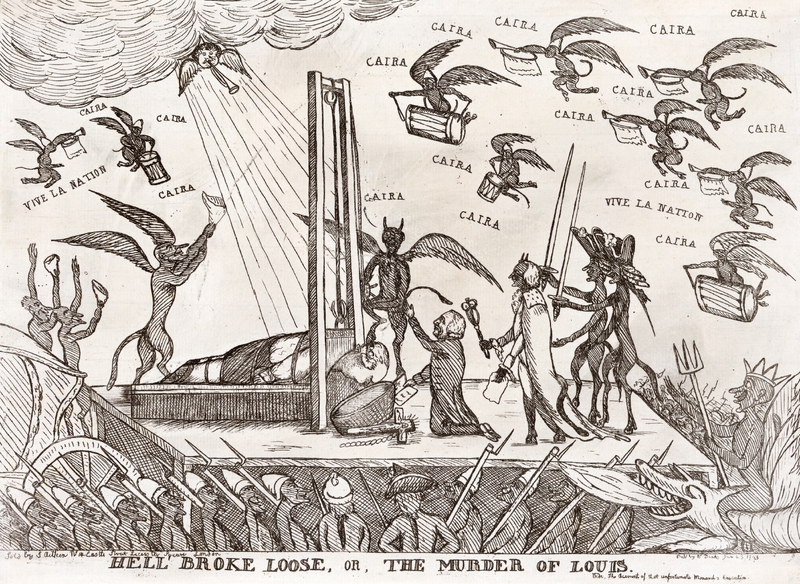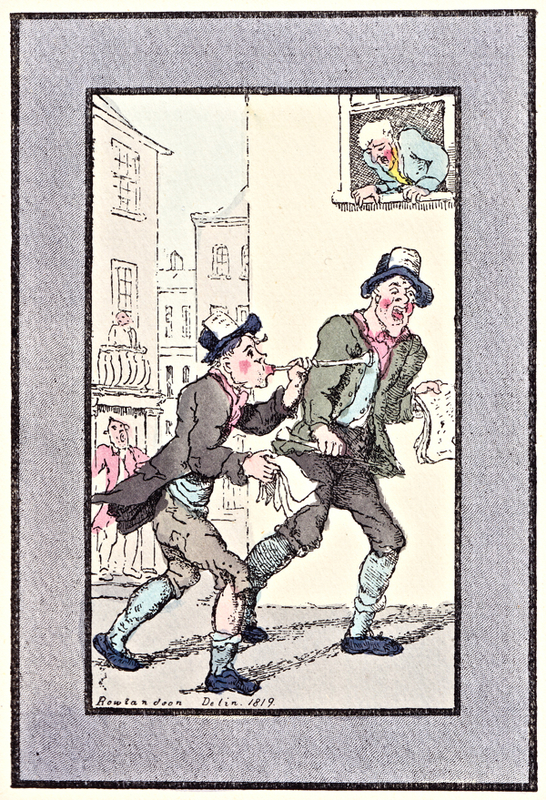Item set
Artworks
- Title
- Artworks
Items
-
ItemTyburn Tree - Pavement PlaqueA plaque on the traffic island at Marble Arch indicates the spot where the infamous Tyburn Tree, a three-legged gallows, once stood. An estimated 50,000 people were executed here between 1571 and 1783, many having been dragged from the Tower of London.
-
ItemThe March of the Guards to FinchleyThe March of the Guards to Finchley, also known as The March to Finchley or The March of the Guards, is a 1750 oil-on-canvas painting by English artist William Hogarth, owned by and on display at the Foundling Museum. This painting depicts London during the Jacobite Rebellion in 1746. Toward the end of 1745 concerns were raised that the capital would be undefended in the event of a Jacobite attack. William Augustus, the Duke of Cumberland, Commander of the British Army, decided to garrison troops to the north of the city as a precaution. In the foreground soldiers can be seen assembling at the Tottenham Court Road turnpike.
-
ItemThe Idle 'Prentice Executed at Tyburn Series: Industry and Idleness, Plate 11Plate 11: the place of execution with, in the middle ground, Idle seated in a cart with his coffin and John Wesley exhorting him to repent, the Newgate chaplain in a carriage, the triple gallows, and a wooden gallery crowded with onlookers; in the foreground an unruly mob including a ragged woman selling a copy of "The last dying Speech & confession of Tho. Idle" and Tiddy Doll, the gingerbread seller.
-
ItemThe execution of James Graham, first Marquess of MontroseThe execution of James Graham, first Marquess of Montrose; Montrose with the hangman upon a ladder leaning against the gallows; various figures in attendance; on the right, a figure being beheaded with an axe; Edinburgh in the background. Illustration to Jacob van Oort's "Ontlokene roose, bloeyende distel-bloem, en hersnaerde harp"
-
ItemThe Enraged MusicianA scene in London, possibly near St Martin's-in-the-Fields, with a musician at an open window holding his ears against the noise of the street; a ballad-seller chants while her baby cries, a milkmaid and other street-traders cry their wares, one small boy plays a drum while another urinates under the startled gaze of a small girl who holds a rattle, an itinerant oboist plays, a knife-grinder sharpens a cleaver, and so on. In this state the horse on the extreme right is black (white in the earlier state), the boy's slate trailing on the ground was only half shaded in the earlier state, but is now darkened.
-
ItemPortrait of John FawcettWatercolour portrait depicting John Fawcett, the actor and dramatist, in the role of Autolycus in Shakespeare's 'A Winter's Tale'. Signed and dated T. C. Wageman 1828.
-
ItemPortrait of Jean-Baptiste TroppmannPhotographic portrait of the French murderer Jean-Baptiste Troppmann
-
ItemPillory, Charing CrossPlate 62: view of Cockspur Street, Charing Cross, with two men in the pillory in the centre surrounded by an enthusiastic crowd, on the right the equestrian statue of Charles I stands watching over the scene; illustration to the book 'Microcosm of London'.
-
ItemPaul's WalkJohn Franklin's illustration of Paul's Walk for William Harrison Ainsworth's novel, Old St. Paul's, published London : Chapman & Hall, 1841.
-
ItemNew ElegyPlate XIV 'New Elegy' - Illustration from 'The Cries of London' 1839
-
ItemMurder of William of OrangePrince William of Orange was assassinated by a Jesuit named Balthasar Gérard (1557-1584).
-
Item
-
ItemLe Bûcher (The Stake), plate 13 from Les Misères et les malheurs de la guerre (The miseries and misfortunes of war) series.Callot has always been regarded as one of the exceptional artists of his time, although he never made any paintings; he worked exclusively as a printmaker and produced more than 1400 plates, almost all of which he designed and which earned him enduring fame across Europe. Callot hailed from Nancy, capital of the Duchy of Lorraine, were he grew up in elevated court circles and was apprenticed by his father to the court goldsmith. He departed for Rome at a young age, training there as a printmaker and forming his recognisable style. By 1614 he was living in Florence and working for the Grand Dukes of Tuscany, recording theatrical productions and court pageants. He returned to Nancy in 1621 and two years later was appointed artist to the Lorraine court under the patronage of Duke Henri II, but most of his activity involved commissions from religious orders and prints made independently for sale to the public. To this last category belongs Callot’s masterpiece, the series of 18 small etchings known in English as The miseries and misfortunes of war, arguably the best-known set of prints produced in France during the 17th century. The prints were marketed in Paris in 1633 by Callot’s friend, the publisher Israel Henriet, and the set was sold as a booklet, stitched together at the left side. Each plate (excluding the title page) contains a verse commentary in the bottom margin attributed to the voracious print collector, the abbé Michel de Marolles. Marolles famously sold his collection to Louis XIV in 1667, and it eventually became the foundation of the present-day print collection at the Bibliothèque nationale in Paris. Callot only made etchings but he handled the technique in a very particular way: he used a specially designed tool called an échoppe which allowed him to create elegant, swelling lines mimicking those produced by the engraver’s burin. Thus Callot was able to imitate the effects of the nobler art of engraving while sustaining the speed of execution peculiar to the process of etching. Working on a miniaturist’s scale, his animated vignettes are replete with detail; indeed, part of their fascination is due to the vast spaces and hopelessly innumerable crowds Callot managed to capture in such a reduced format. The miseries and misfortunes of war abounds with scenes of barbarity and carnage, and although it was not intended to be read as a sequence of documentary-like observations of real events, there is no denying the aspect of lived experience which runs through the plates. The socio- political context in which Callot made the prints was the Thirty Years’ War, a succession of conflicts that devastated central Europe between 1618 and 1648. What was initially a string of religious disputations between Protestants and Catholics erupted into a larger conflict between the Habsburgs of the Holy Roman Empire and the French kings, the Bourbons, for dominance in Europe. Lorraine sided with the Habsburgs; in 1633 the French army invaded Lorraine and in the following years the territory was ravaged by marauding troops, many of them mercenaries with no allegiance to their side, wreaking havoc on the lives of ordinary people and making violence part of the background of daily life. Callot’s series is less an indictment of war than a moral tale about the unhappy consequences that befall the undisciplined soldier. The descent into lawlessness is typified by the plate depicting troops looting a farmhouse and torturing the inhabitants. Other prints focus on the radical corrections administered by the military to corrupt soldiers: one such plate depicts the body of a criminal soldier being broken on a wheel, while in another, executed men hang from the boughs of a tree, the shocking spectacle belied by Callot’s refined touch and the measured elegance of the composition at large. The verse in the lower margin reads: ‘Those enemies of heaven, who a thousand times sin against the holy decrees and divine laws, glory in spitefully pillaging and destroying the temples of the true God with idolatrous hand, but as punishment for having burned them, are themselves finally sacrificed to the flames.’ Peter Raissis, Prints & drawings Europe 1500–1900, 2014https://www.artgallery.nsw.gov.au/collection/works/DO10.1963.13/
-
ItemLe Barbarie del mondoLe barbarie del mondo, by Hieronymous Porro (fl 1574-1604), depicts Italian street people collected under the unkind general heading of "barbarism of the world". I misread the description of the actions of the people in the print (found at the University of Texas website below) as “Making a living doing unnecessary tasks of nothing”—a harsh appraisal of the efforts of people who have nothing trying to make a little bit of change for bread, though it does describe the general sentiment of the print, wrong or not. Though the written descriptions are slightly kinder than this, the depictions of the social unfortunates was certainly not. The people described in this image--the collection of unfortunates,a veritable museum of social "outcasts"--include fools, street laborers, merchants, the disabled, prostitutes, destitute women (with children), musicians, street performers, flagellants, religious zealots, and general beggars, not to mention what must've been alley dwellers, street-sleepers and the homeless. Not too much different from today. What makes this image remarkable to me is that it makes these generally invisible people visible, gathered together in one image. Generally these people would be used occasionally as found objects, tertiary depictions in larger, grander artworks showing grand structures or town views, the people used to show scale, and the artist taking some small liberty by employing street people as the scale units rather than landed strollers. (See here for an example.) Holbein, de Hooghe, Bruegel--masters of the large gathering and crowds, did not attempt a solitary image to the underclasses' underclass. [Source: Harry Ransom Humanities Research Center, University of Texas, Austin.]
-
ItemLast Dying SpeechThis watercolour depicts a streetseller vending a batch of criminal broadsheets. In the background, crowds are watching an execution taking place outside Newgate Prison.
-
ItemLa Roue (The Wheel), plate 14 from Les Misères et les malheurs de la guerre (The miseries and misfortunes of war) series.Callot has always been regarded as one of the exceptional artists of his time, although he never made any paintings; he worked exclusively as a printmaker and produced more than 1400 plates, almost all of which he designed and which earned him enduring fame across Europe. Callot hailed from Nancy, capital of the Duchy of Lorraine, were he grew up in elevated court circles and was apprenticed by his father to the court goldsmith. He departed for Rome at a young age, training there as a printmaker and forming his recognisable style. By 1614 he was living in Florence and working for the Grand Dukes of Tuscany, recording theatrical productions and court pageants. He returned to Nancy in 1621 and two years later was appointed artist to the Lorraine court under the patronage of Duke Henri II, but most of his activity involved commissions from religious orders and prints made independently for sale to the public. To this last category belongs Callot’s masterpiece, the series of 18 small etchings known in English as The miseries and misfortunes of war, arguably the best-known set of prints produced in France during the 17th century. The prints were marketed in Paris in 1633 by Callot’s friend, the publisher Israel Henriet, and the set was sold as a booklet, stitched together at the left side. Each plate (excluding the title page) contains a verse commentary in the bottom margin attributed to the voracious print collector, the abbé Michel de Marolles. Marolles famously sold his collection to Louis XIV in 1667, and it eventually became the foundation of the present-day print collection at the Bibliothèque nationale in Paris. Callot only made etchings but he handled the technique in a very particular way: he used a specially designed tool called an échoppe which allowed him to create elegant, swelling lines mimicking those produced by the engraver’s burin. Thus Callot was able to imitate the effects of the nobler art of engraving while sustaining the speed of execution peculiar to the process of etching. Working on a miniaturist’s scale, his animated vignettes are replete with detail; indeed, part of their fascination is due to the vast spaces and hopelessly innumerable crowds Callot managed to capture in such a reduced format. The miseries and misfortunes of war abounds with scenes of barbarity and carnage, and although it was not intended to be read as a sequence of documentary-like observations of real events, there is no denying the aspect of lived experience which runs through the plates. The socio- political context in which Callot made the prints was the Thirty Years’ War, a succession of conflicts that devastated central Europe between 1618 and 1648. What was initially a string of religious disputations between Protestants and Catholics erupted into a larger conflict between the Habsburgs of the Holy Roman Empire and the French kings, the Bourbons, for dominance in Europe. Lorraine sided with the Habsburgs; in 1633 the French army invaded Lorraine and in the following years the territory was ravaged by marauding troops, many of them mercenaries with no allegiance to their side, wreaking havoc on the lives of ordinary people and making violence part of the background of daily life. Callot’s series is less an indictment of war than a moral tale about the unhappy consequences that befall the undisciplined soldier. The descent into lawlessness is typified by the plate depicting troops looting a farmhouse and torturing the inhabitants. Other prints focus on the radical corrections administered by the military to corrupt soldiers: one such plate depicts the body of a criminal soldier being broken on a wheel, while in another, executed men hang from the boughs of a tree, the shocking spectacle belied by Callot’s refined touch and the measured elegance of the composition at large. The verse in the lower margin reads: 'The ever watchful eye of divine Justice completely banishes mourning from a region when, holding the sword and scales in her hands, she judges and punishes the inhuman thief who lies in wait for peasants, murders them and toys with them, then becomes himself the plaything of the wheel.’ Peter Raissis, Prints & drawings Europe 1500–1900, 2014https://www.artgallery.nsw.gov.au/collection/works/DO10.1963.14/
-
ItemLa Pendaison (The hanging), plate 11 from Les Misères et les malheurs de la guerre (The miseries and misfortunes of war) series.Callot has always been regarded as one of the exceptional artists of his time, although he never made any paintings; he worked exclusively as a printmaker and produced more than 1400 plates, almost all of which he designed and which earned him enduring fame across Europe. Callot hailed from Nancy, capital of the Duchy of Lorraine, were he grew up in elevated court circles and was apprenticed by his father to the court goldsmith. He departed for Rome at a young age, training there as a printmaker and forming his recognisable style. By 1614 he was living in Florence and working for the Grand Dukes of Tuscany, recording theatrical productions and court pageants. He returned to Nancy in 1621 and two years later was appointed artist to the Lorraine court under the patronage of Duke Henri II, but most of his activity involved commissions from religious orders and prints made independently for sale to the public. To this last category belongs Callot’s masterpiece, the series of 18 small etchings known in English as The miseries and misfortunes of war, arguably the best-known set of prints produced in France during the 17th century. The prints were marketed in Paris in 1633 by Callot’s friend, the publisher Israel Henriet, and the set was sold as a booklet, stitched together at the left side. Each plate (excluding the title page) contains a verse commentary in the bottom margin attributed to the voracious print collector, the abbé Michel de Marolles. Marolles famously sold his collection to Louis XIV in 1667, and it eventually became the foundation of the present-day print collection at the Bibliothèque nationale in Paris. Callot only made etchings but he handled the technique in a very particular way: he used a specially designed tool called an échoppe which allowed him to create elegant, swelling lines mimicking those produced by the engraver’s burin. Thus Callot was able to imitate the effects of the nobler art of engraving while sustaining the speed of execution peculiar to the process of etching. Working on a miniaturist’s scale, his animated vignettes are replete with detail; indeed, part of their fascination is due to the vast spaces and hopelessly innumerable crowds Callot managed to capture in such a reduced format. The miseries and misfortunes of war abounds with scenes of barbarity and carnage, and although it was not intended to be read as a sequence of documentary-like observations of real events, there is no denying the aspect of lived experience which runs through the plates. The socio- political context in which Callot made the prints was the Thirty Years’ War, a succession of conflicts that devastated central Europe between 1618 and 1648. What was initially a string of religious disputations between Protestants and Catholics erupted into a larger conflict between the Habsburgs of the Holy Roman Empire and the French kings, the Bourbons, for dominance in Europe. Lorraine sided with the Habsburgs; in 1633 the French army invaded Lorraine and in the following years the territory was ravaged by marauding troops, many of them mercenaries with no allegiance to their side, wreaking havoc on the lives of ordinary people and making violence part of the background of daily life. Callot’s series is less an indictment of war than a moral tale about the unhappy consequences that befall the undisciplined soldier. The descent into lawlessness is typified by the plate depicting troops looting a farmhouse and torturing the inhabitants. Other prints focus on the radical corrections administered by the military to corrupt soldiers: one such plate depicts the body of a criminal soldier being broken on a wheel, while in another, executed men hang from the boughs of a tree, the shocking spectacle belied by Callot’s refined touch and the measured elegance of the composition at large. The verse in the lower margin reads: : ‘Finally these infamous and abandoned thieves, hanging from this tree like wretched fruit, show that crime (horrible and black species) is itself the instrument of shame and vengeance, and that it is the fate of corrupt men to experience the justice of heaven sooner or later.’ Peter Raissis, Prints & drawings Europe 1500–1900, 2014https://www.ngv.vic.gov.au/explore/collection/work/41047/
-
ItemL’Estrapade (The Strappado), plate 10 from the suite Les Misères et les malheurs de la guerre (The miseries and misfortunes of war).Callot has always been regarded as one of the exceptional artists of his time, although he never made any paintings; he worked exclusively as a printmaker and produced more than 1400 plates, almost all of which he designed and which earned him enduring fame across Europe. Callot hailed from Nancy, capital of the Duchy of Lorraine, were he grew up in elevated court circles and was apprenticed by his father to the court goldsmith. He departed for Rome at a young age, training there as a printmaker and forming his recognisable style. By 1614 he was living in Florence and working for the Grand Dukes of Tuscany, recording theatrical productions and court pageants. He returned to Nancy in 1621 and two years later was appointed artist to the Lorraine court under the patronage of Duke Henri II, but most of his activity involved commissions from religious orders and prints made independently for sale to the public. To this last category belongs Callot’s masterpiece, the series of 18 small etchings known in English as The miseries and misfortunes of war, arguably the best-known set of prints produced in France during the 17th century. The prints were marketed in Paris in 1633 by Callot’s friend, the publisher Israel Henriet, and the set was sold as a booklet, stitched together at the left side. Each plate (excluding the title page) contains a verse commentary in the bottom margin attributed to the voracious print collector, the abbé Michel de Marolles. Marolles famously sold his collection to Louis XIV in 1667, and it eventually became the foundation of the present-day print collection at the Bibliothèque nationale in Paris. Callot only made etchings but he handled the technique in a very particular way: he used a specially designed tool called an échoppe which allowed him to create elegant, swelling lines mimicking those produced by the engraver’s burin. Thus Callot was able to imitate the effects of the nobler art of engraving while sustaining the speed of execution peculiar to the process of etching. Working on a miniaturist’s scale, his animated vignettes are replete with detail; indeed, part of their fascination is due to the vast spaces and hopelessly innumerable crowds Callot managed to capture in such a reduced format. The miseries and misfortunes of war abounds with scenes of barbarity and carnage, and although it was not intended to be read as a sequence of documentary-like observations of real events, there is no denying the aspect of lived experience which runs through the plates. The socio- political context in which Callot made the prints was the Thirty Years’ War, a succession of conflicts that devastated central Europe between 1618 and 1648. What was initially a string of religious disputations between Protestants and Catholics erupted into a larger conflict between the Habsburgs of the Holy Roman Empire and the French kings, the Bourbons, for dominance in Europe. Lorraine sided with the Habsburgs; in 1633 the French army invaded Lorraine and in the following years the territory was ravaged by marauding troops, many of them mercenaries with no allegiance to their side, wreaking havoc on the lives of ordinary people and making violence part of the background of daily life. Callot’s series is less an indictment of war than a moral tale about the unhappy consequences that befall the undisciplined soldier. The descent into lawlessness is typified by the plate depicting troops looting a farmhouse and torturing the inhabitants. Other prints focus on the radical corrections administered by the military to corrupt soldiers: one such plate depicts the body of a criminal soldier being broken on a wheel, while in another, executed men hang from the boughs of a tree, the shocking spectacle belied by Callot’s refined touch and the measured elegance of the composition at large. The verse in the lower margin reads: ‘It is not without cause that great captains have well-advisedly invented these punishments for idlers, blasphemers, traitors to duty, quarrellers and liars, whose actions, blinded by vice, make those of others lax and lawless.’https://www.artgallery.nsw.gov.au/collection/works/DO10.1963.10/?
-
ItemL’Arquebusade (The firing squad), plate 12 from Les Misères et les malheurs de la guerre (The miseries and misfortunes of war) series.Callot has always been regarded as one of the exceptional artists of his time, although he never made any paintings; he worked exclusively as a printmaker and produced more than 1400 plates, almost all of which he designed and which earned him enduring fame across Europe. Callot hailed from Nancy, capital of the Duchy of Lorraine, were he grew up in elevated court circles and was apprenticed by his father to the court goldsmith. He departed for Rome at a young age, training there as a printmaker and forming his recognisable style. By 1614 he was living in Florence and working for the Grand Dukes of Tuscany, recording theatrical productions and court pageants. He returned to Nancy in 1621 and two years later was appointed artist to the Lorraine court under the patronage of Duke Henri II, but most of his activity involved commissions from religious orders and prints made independently for sale to the public. To this last category belongs Callot’s masterpiece, the series of 18 small etchings known in English as The miseries and misfortunes of war, arguably the best-known set of prints produced in France during the 17th century. The prints were marketed in Paris in 1633 by Callot’s friend, the publisher Israel Henriet, and the set was sold as a booklet, stitched together at the left side. Each plate (excluding the title page) contains a verse commentary in the bottom margin attributed to the voracious print collector, the abbé Michel de Marolles. Marolles famously sold his collection to Louis XIV in 1667, and it eventually became the foundation of the present-day print collection at the Bibliothèque nationale in Paris. Callot only made etchings but he handled the technique in a very particular way: he used a specially designed tool called an échoppe which allowed him to create elegant, swelling lines mimicking those produced by the engraver’s burin. Thus Callot was able to imitate the effects of the nobler art of engraving while sustaining the speed of execution peculiar to the process of etching. Working on a miniaturist’s scale, his animated vignettes are replete with detail; indeed, part of their fascination is due to the vast spaces and hopelessly innumerable crowds Callot managed to capture in such a reduced format. The miseries and misfortunes of war abounds with scenes of barbarity and carnage, and although it was not intended to be read as a sequence of documentary-like observations of real events, there is no denying the aspect of lived experience which runs through the plates. The socio- political context in which Callot made the prints was the Thirty Years’ War, a succession of conflicts that devastated central Europe between 1618 and 1648. What was initially a string of religious disputations between Protestants and Catholics erupted into a larger conflict between the Habsburgs of the Holy Roman Empire and the French kings, the Bourbons, for dominance in Europe. Lorraine sided with the Habsburgs; in 1633 the French army invaded Lorraine and in the following years the territory was ravaged by marauding troops, many of them mercenaries with no allegiance to their side, wreaking havoc on the lives of ordinary people and making violence part of the background of daily life. Callot’s series is less an indictment of war than a moral tale about the unhappy consequences that befall the undisciplined soldier. The descent into lawlessness is typified by the plate depicting troops looting a farmhouse and torturing the inhabitants. Other prints focus on the radical corrections administered by the military to corrupt soldiers: one such plate depicts the body of a criminal soldier being broken on a wheel, while in another, executed men hang from the boughs of a tree, the shocking spectacle belied by Callot’s refined touch and the measured elegance of the composition at large. The verse in the lower margin reads: ‘Those who, in obedience to their evil genius, fail in their duty, use tyranny, take pleasure only in evil and violate reason, and whose treason-filled actions produce a thousand bloody uproars in the camp, are thus chastised and shot.’ Peter Raissis, Prints & drawings Europe 1500–1900, 2014https://www.artgallery.nsw.gov.au/collection/works/DO10.1963.12/
-
ItemHinrichtung Peter Stump (Execution of Peter Stump)This woodcut shows the 'breaking wheel' as it was used in Germany in the Middle Ages. The exact date is unknown, as is the creator, but it depicts the execution of Peter Stumpf in Cologne in 1589. This form of punishment was most common during the middle ages and early modern age. Though in many regions of Germany, the breaking wheel was used even in the 19th century. The last known execution occurred in Prussia in 1841. The woodcut relates the crime and the punishment of Peter Stumpf and includes a depiction of the punishment of his daughter and mistress. Stumpf was accused of being a werewolf and in the top left hand corner of the woodcut we see a large wolf attacking a child. Above this scene a man with a sword is seen fighting off the wolf and in doing so, lops off the wolf’s left forepaw. In the centre left of the illustration we are shown the first punishment of Stumpf, namely the tearing of his flesh with red hot pincers while he is bound to a wheel. In the middle we see the executioner using the blunt side of an axe to break Stump’s arm and leg bones. On the righthand side of the illustration the executioner beheads Stump. In each of these three depictions we can see that Stump’s left hand is missing, presumably pointing to the fact that the werewolf had its left forepaw cut off. After his beheading, Stump’s body is dragged away to be burnt. In the top right hand corner of the wood cut we see the fire where Stumpf’s daughter and mistress, each tied to a stake, are burnt alive with Stumpf’s headless body tied to a stake between them. Also shown is a wheel, mounted on a pole, which carries Stumpf’s severed head together with a figure of a wolf.
-
ItemHell Broke Loose, or, The Murder of LouisSatire on the execution of Louis XVI; the king kneeling under the guillotine operated by two winged devils; Abbé Edgeworth kneeling in front of him, with crucifix and prayer's book; angel playing trumpet among clouds surrounded by devils flying above; army of sans-culottes holding bayonets in the foreground. British Museum.
-
ItemGreat News!Two men handing out news notices in the street. One blowing a small wind instrument.

